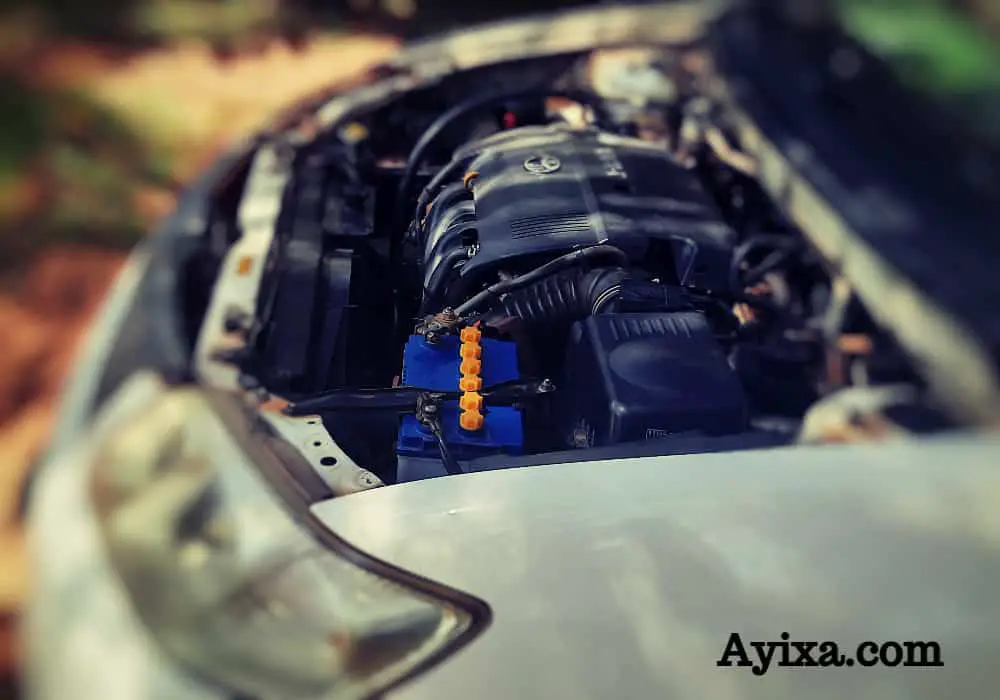Have you just jumpstarted your car and are wondering how long you should let it run so that you are quite confident of starting perfectly the next time?
In this post, I provide some guidance from my experience – on:
- how long a car engine should run (indicative – there are several other factors at play),
- how you can know to check if your battery is charged,
and lastly, several reasons why your car battery may not charge properly.
How Long a Car Battery Takes to Charge after Jumpstart?
Your car battery should be able to charge sufficiently after about 15-30 minutes of driving depending on whether the battery is deeply discharged or not, how much of the alternator’s power is available for charging, provided your car’s battery and electrical system are still in good condition.
A deeply discharged battery or if you have several electrical loads switched on in the car increases the power draw from the alternator leaving less power available to charge the battery.
This in turn increases the time a car battery takes to charge sufficiently so that you do not have to jumpstart it the next time.
How Long Should you Let your Car run (idling)?
In this case, plan to leave your car engine running for at least 15-30 mins so that the car’s battery is charged somewhat, not necessarily fully as alternators are designed to maintain the car’s battery condition.
This assumes that your battery and the car’s electrical system are still in good working condition otherwise your battery will not charge as well.
You can reduce the charging time by switching off electrical accessories like the blower fan, stereo, and others after jumpstarting the car to increase how much power is available to charge the battery.
How to Tell that Car Battery is Charged after Jumpstart?
There are a couple of ways that you can use as a guide to know that your car battery is charged.
If you drive the car for at least 15-20 minutes after jumpstarting then usually your car battery should charge sufficiently provided that the electrical system is working well and the battery is still in good condition.
A better and more accurate way is to use a portable car battery tester, usually connected across the battery terminals to measure the car battery voltage and the overall health status of the battery.
You may also want to read: How many Volts does a Car Battery Need to Start?
What if your Car Battery is not Charging Fully?
if your battery fails to charge sufficiently after driving, you may want to immediately check that your alternator and battery connections are firm, battery posts are intact as an interim step.
You can also connect your car battery to an external battery charger to fully charge your car battery.
If your battery fails to hold a charge even after being charged fully, then you should investigate possible problems with the battery itself or the car alternator.
Can a Car Battery take a Shorter time to Charge after JumpStart?
Yes, a car battery can take a shorter time to charge after jumpstarting.
Switch off unnecessary electrical loads that drain the alternator power for your car battery to take a shorter time to charge. This way more power flows to the battery to charge faster.
As the alternator runs it supplies power to the electrical loads that are switched on in your car.
It is only the balance of the power left over after supplying these electrical loads that are used to charge the car battery.
Examples of electrical loads that can significantly drain the battery are blower fans, headlights, and powerful car sound systems.
Related Questions
Why your Car Battery may Not Charge (properly) after Jumpstarting?
Your car battery may fail to charge properly or not charge at all even after these suggestions. There are several possible reasons that you can work through to hopefully help you quickly identify the cause.
- Check for electrical Loads in your car with a high power draw that may be switched on. Examples are offroad lighting, a car navigation system, and automatic heating for the seats.
These loads not only drain the alternator power leaving little to no charge to charge the battery, but they may also draw additional power from the car battery further draining it.
In modern vehicles, car accessories are automatically switched off if the battery voltage is low to preserve the battery power.
- Check for loose battery or alternator wiring, bent or corroded alternator connector pins. These can cause voltage drops in your car’s electrical system that affects how well the car’s battery charges.
- Confirm that the car battery terminals are clean of any corrosion and that they hold the battery posts firmly. Loose or poor battery connections also affect how well the battery charges.
- Dead car battery. Your car battery may be dead or failing and not be able to hold enough charge to start your car. You may also want to read the post: How Often to Replace a Car Battery
- Is the alternator belt firm or loose? A loose or worn alternator belt can also affect how well the alternator is able to charge the car battery.
- Bad alternator. A failing alternator may not be able to supply the necessary voltage to charge the car battery sufficiently.
Final Thoughts
You can charge your car battery sufficiently after jumpstarting it by driving around or keeping the car running idle for at least 15-20 minutes.
You should be able to start your car without having to jumpstart it.
That said, there are several reasons that affect how quickly the car battery charges including – loose wiring battery and alternator wiring, loose alternator belt, high electrical loads, a dead battery or alternator.
If your battery is not charging well, you can work through the list to hopefully help you pinpoint the problem faster.
Related Topics
